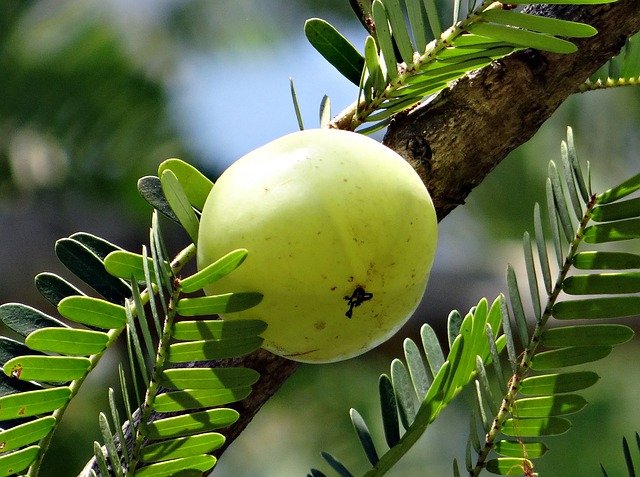
Amla oil: properties, opinions, where to find it and all the benefits for body and hair care.
Amla oil is produced from the Emblica Officinalis botanical species, popularly known as Indian gooseberry, amalika or amla. It is a tree of the Phyllanthaceae family, famous for its edible fruit, amla.
The tree is small to medium in size, reaches a height of 1-8 meters and has twigs with almost pinnate leaves. The fruit is spherical and has six vertical stripes on the outer skin. The fruits ripen in autumn and have a bitter, sour taste and the pulp has a fibrous texture. Even if for us Westerners the taste of amla would not be appreciable, in India it is a very consumed fruit. Amla is a fruit widely used in traditional Indian medicine or Ayurveda medicine. According to the principles of Ayurveda medicine, amla would balance all three doshas. In the traditional Indian medicine of Emblica Officinalis, any part is used (fruit, roots, branches and leaves).
Amla oil, properties
In the cosmetic field, amla oil is very popular, used for the formulation of strengthening shampoo or as a natural conditioner. The use of amla oil as a conditioner and strengthener for hair is linked to Indian folk customs: among the popular beliefs there is the one that amla oil would prevent gray hair.
The amla oil, thanks to its profile in terms of fatty acids, would nourish the hair and rebalance the scalp by exerting a strengthening action.
According to online reviews, amla oil could nourish the hair thanks to its high content of ascorbic acid (vitamin C). In fact, tests conducted in the laboratory have reported concentrations far lower than those widespread until recently, when it was believed that the antioxidant power of alma oil was dictated exclusively by this vitamin.
The antioxidant power of amla oil is not linked exclusively to Vitamin C, but to the high content of ellegitannins, such as amblycanin A, emblicanin B and punigloconin and other polyphenols such as flavonoids, kaemphenol and gallic acid.
For hair care, you can mix amla oil with henna: add hot water to the mixture and apply the compress to the hair scalp for about two hours. Avoid using shampoos during the next 24 hours and, at the end of the dyeing, rinse your hair only with water.
Due to its properties, amla oil is indicated for the care of the skin of the face and body. It can be used naturally, as an after-shower to hydrate the body. Some portals recommend using amla oil for face cleansing or worse, as an anti-pimple. Although it is a great astringent, its effectiveness against pimples has never been proven. Those with oily skin problems should use sulfur soap rather than amla oil, which is also useful in case of oily hair. Amla oil can be used on dry or combination skin to counteract blackheads.
To moisturize and nourish the skin, it can be used as a massage oil to be combined with a nice warm bath to remove excess residues. The opinions of those who have tried this product are very positive especially when it has been used as a moisturizing or detangling after-shower for hair.
Amla oil has no contraindications. The only ever green precaution is to apply amla oil only on a small part of the body in order to avoid any allergic reactions. For more information: amla, cultivation and properties.
Curiosity
Amla oil is used as a mordant to dye fabrics in a natural way.






